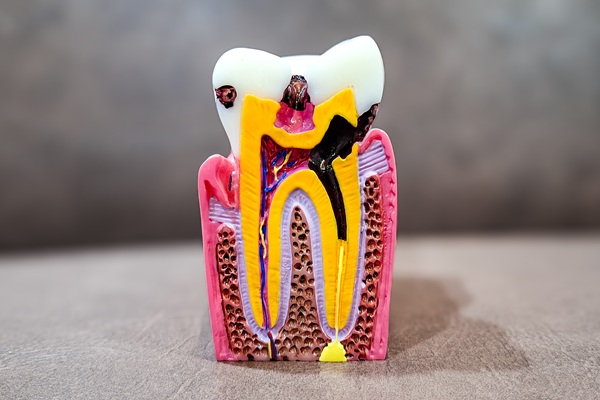Pain and Root Canals: What You Should Know

A root canal is one of the most effective treatments for saving a natural tooth and preserving oral health. While they have a negative reputation for being painful, this is no longer the case with modern pain management techniques. General dentists prioritize patient comfort during and after a root canal. Understanding the root canal process and what to expect afterward can help reduce worry and support a healthy recovery.
The root canal procedure
A root canal removes the infected pulp tissue from inside the tooth. The pulp, which contains nerves and blood vessels, can become inflamed or infected due to deep cavities, cracks, repeated dental procedures, or dental trauma. Once this occurs, the pulp cannot heal on its own and must be removed to prevent further complications. Thus, a general dentist will use dental X-rays to identify a deep infection and confirm the need for a root canal.
To begin root canal therapy, the dentist applies local anesthesia to numb the area, ensuring the procedure is as comfortable as possible. Once the area is fully numb, they will make a small opening in the tooth to reach its pulp chamber and root canals. Next, the dentist removes the infected pulp and cleans, shapes, and fills the tooth. The dental team then covers the opening with a temporary or permanent filling. The dentist will likely recommend a dental crown to restore the tooth’s full function and appearance.
Root canals and pain
Root canals are constantly associated with pain. However, the procedure itself is usually no more uncomfortable than receiving a dental filling or crown. The pain that patients often attribute to root canals typically stems from the infection present before treatment, not the procedure itself. Once the dentist removes the affected tissue and disinfects the canal, the patient typically feels immediate relief from the discomfort they were feeling before the procedure.
General dentists also rely on advanced tools and techniques that prioritize comfort throughout root canal therapy, making the experience more manageable. As previously mentioned, this can involve the use of local anesthesia to numb the area. It is normal to feel slight pressure or vibrations as the dentist completes the procedure, but they should not experience sharp pain.
Managing pain after a root canal
Mild sensitivity or discomfort is common after root canal therapy and can typically be managed with over-the-counter pain relievers. In order to protect the tooth, patients should avoid chewing on the treated side until the dentist places the permanent restoration. Additionally, gentle brushing, salt water rinses, and avoiding hard foods support healing and reduce irritation. If the dentist prescribes antibiotics, the patient will need to complete the full course to prevent postoperative infection and promote a smooth recovery.
Root canals make for a more comfortable smile
Although root canals have a poor reputation for being painful, they relieve pain in the long run. This is because once the inflamed or infected tissue is removed, the pressure, swelling, and sensitivity that caused the discomfort are resolved. Learn more in an appointment with the Smile Solutions team at our Garden City office.
Request an appointment here: https://www.smilesolutionsny.com or call Smile Solutions at (516) 874-5274 for an appointment in our Downey office.
Check out what others are saying about our dental services on Yelp: Root Canal in Garden City, NY.
Related Posts
Restorative dentistry treatments can change your smile and oral health dramatically. This dental subspecialty is particular because it allows patients to once again enjoy normal oral functions. The services deal with dental problems and help patients get back self-esteem and quality of life.The primary focus of a restorative dentist is the diagnosis, prevention, and treatment…
Curious about cosmetic dental services? Read on to learn more. Most people would like to have a pearly white, evenly aligned smile. However, cosmetic dental procedures can do more than simply make a patient's smile look better — these treatments also improve one's oral health and general well-being.The following are some of the effects that…
Learning about cosmetic dental services can prepare you for your upcoming consultation. These procedures aim to enhance your smile and oral health. Each one can elevate your quality of life. Here are the benefits to consider about the cosmetic dental services you may need.Dental veneers and in-office teeth whitening are cosmetic dental services that can…
Research shows that cosmetic dental services can improve more than the appearance of your smile. These treatments can straighten, lighten, or balance your oral components. At the same time, each one can make your mouth healthier. Consider the following oral health benefits you can expect from cosmetic dental services.The general dentist can provide dental veneers…
